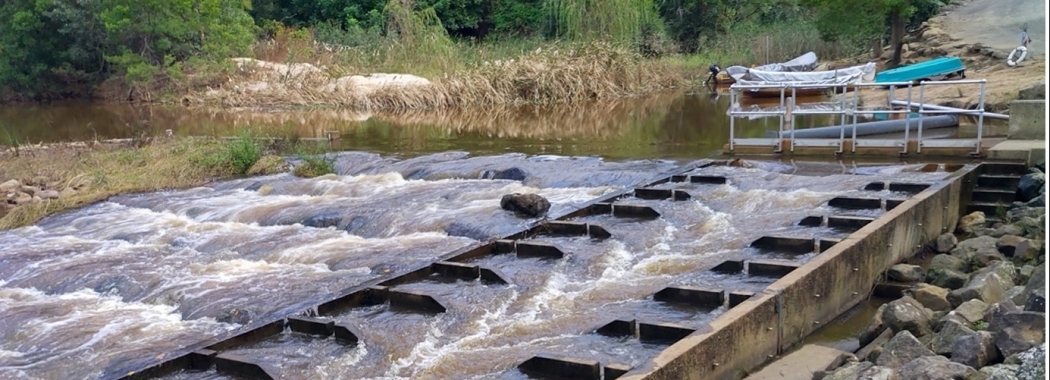New water Hub targets a boost to diminishing fish stocks
A $3.6m partnership with Charles Sturt University will help deployment of UNSW’s novel Tube Fishway system into the Murray-Darling river system.
A $3.6m partnership with Charles Sturt University will help deployment of UNSW’s novel Tube Fishway system into the Murray-Darling river system.

Engineers and scientists from UNSW have welcomed an exciting new venture with Charles Sturt University that they hope will boost diminishing fish stocks in Australia’s inland waterways and benefit indigenous communities.
The Next Generation Water Engineering and River Management Hub is a collaboration between UNSW and Charles Sturt University, along with industrial and community partners including indigenous groups.
The Hub, which will be led by Charles Sturt University’s Institute for Land, Water and Society with a strong team of aquatic ecologists under the directorship of Professor Lee Baumgartner, aims to provide innovative eco-hydraulic solutions to improve ecological conditions and fish migration in rivers.
UNSW, with its strong reputation for excellence in water-related research, will bolster the hub with its skills in water, engineering, aquatic ecology, water management and eco-hydraulics.
UNSW researchers from the School of Civil & Environmental Engineering and the School of Biological, Earth and Environmental Sciences, will specifically focus on the pressing issue of river connectivity and fish passage – through their ongoing work in developing a Tube Fishway.
This is a low-cost and low-energy system that works by hydrodynamically lifting the fish – protected by a cushion of air-water flows – through a tube running over obstructing barriers, up to 10m-tall dams, to deliver them safely into the water on the other side.
Dr Stefan Felder, from the School of Civil and Environmental Engineering, says the new Hub gives UNSW the chance to install and monitor the Tube Fishway in the Murray-Darling river system where there are estimated to be many thousands such barriers preventing fish movements.
“We are ready to go the next step with the Tube Fishway and as part of this Hub one of our deliverables will be to advance it to the field scale,” Dr. Felder said.
“This is a great chance for us to actually get into the areas where it matters, in particular the Murray-Darling Basin. Having a regional partner is really useful because we need people locally out in the region.
“After we install the system there needs to be monitoring and local support and that can be really challenging.”
The Next Generation Water Engineering and River Management Hub has been funded with $3.6 million over 3 years as part of the Regional Research Collaboration Program of the Department of Education, Skills and Employment.
The UNSW team, which also features Adjunct Associate Professor John Harris, Professor Richard Kingsford, Professor Iain Suthers, as well as PhD researchers Reilly Cox and Maryam Farzadkhoo, is led by Adjunct Professor Bill Peirson.
“This hub is a fantastic opportunity for our multi-disciplinary team at UNSW to move towards the deployment of the Tube Fishway in field applications to lift fish across weirs, dams and other barriers,” said Prof. Peirson.
The Hub is also helping to and create partnerships with First Nations Elders in the Basin of the Murray-Darling to co-design an approach to restore traditional, cultural ways of managing fisheries.
And the Tube Fishway could play a major role in boosting fish populations in rivers by restoring their migration pathways and life cycles, which have been obstructed by dams and weirs.
“Native Australian fish stocks in the Murray-Darling Basin have been depleted by 90 per cent, so this is a major issue,” said Dr. Felder.
“Indigenous communities have a close relationship to their land and their water, so helping to rehabilitate fish abundance and diversity will make significant contributions.”